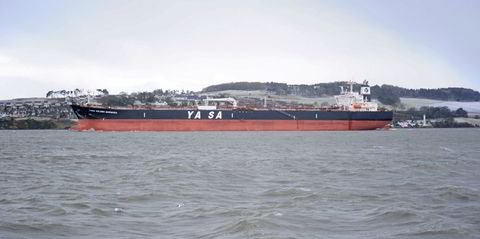Norway’s Wallenius Wilhelmsen has posted its best-ever quarterly profit but warned that the red-hot car carrier sector still faces difficulties.
The Oslo-listed operator of more than 130 ships said net earnings to 30 September were $246m, compared with $65m a year ago.
“I am happy to see improved performance across all business segments,” said chief executive Lasse Kristoffersen.
“Despite these positive results, we still experience a stretched labour market alongside limited vessel and port capacity. We are working hard to meet growing customer demand.”
Revenue was up 37% from 2021 to a record $1.36bn, with shipping operations the most important element in the result as high fuel surcharges and healthy freight rates boosted performance.
Ebitda of $440m was well ahead of the analyst consensus of $317m.
“We also increased our operational efficiency with lower voyage expenses per cubic metre and full fleet utilisation,” Kristoffersen said.
“Challenges remain, despite having seen some improvements in port congestion in some geographies, as well as a greater availability of semiconductors.”
The CEO is expecting a continued favourable supply-demand balance, but he is closely following macroeconomic developments.
The last known anti-trust customer claim against the company was concluded in the third quarter.
These price-fixing cases have cost the group close to $900m since 2012.
Company has moved on
“What happened was against the law and not according to our principles and procedures,” Kristoffersen said.
“I am very pleased to say that we for many years have moved on with new and renewed contracts with all customers. Compliance is at the core of our company, and it will continue to be so in the future.”
Wallenius Wilhelmsen operates more than 130 vessels servicing 16 trade routes to six continents, plus terminals.
It has 82 owned ships.
Two charter-in contracts remain up for renewal in 2022.
“The decision to extend or redeliver the charters will be dependent on the overall market situation, including the price of charters, demand growth and the long-term fleet strategy,” the company said.





